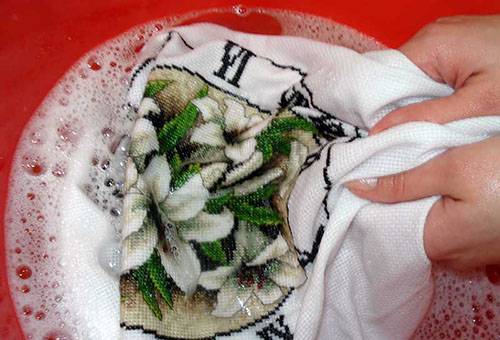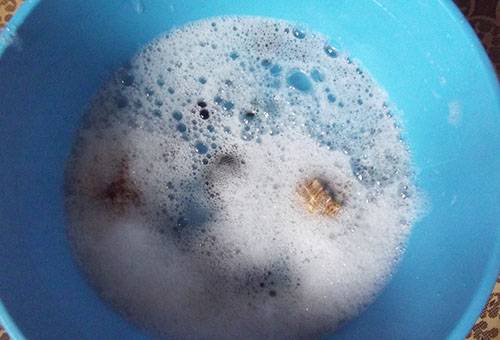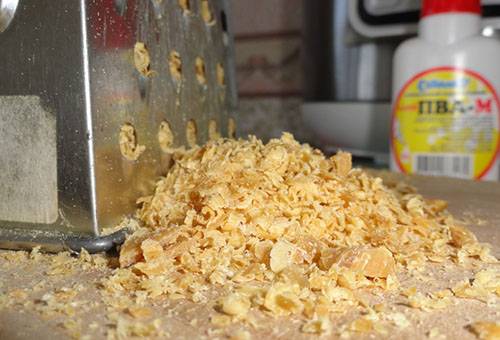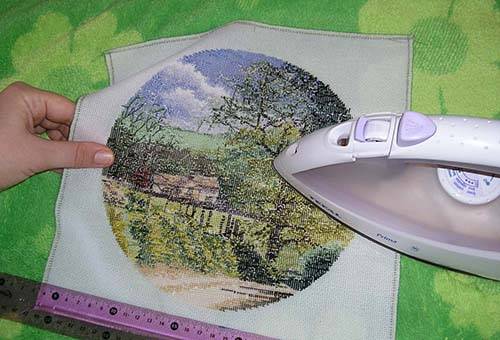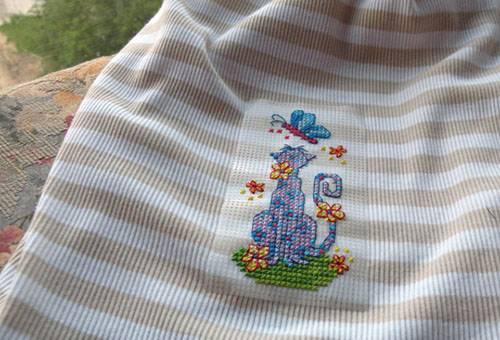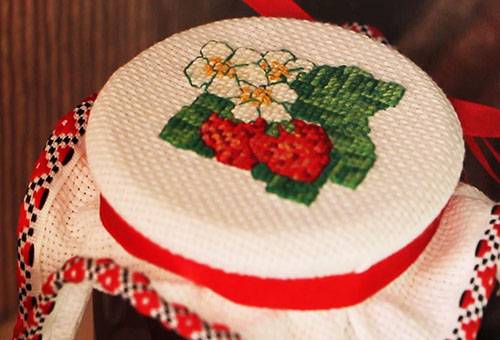How to wash cross stitch on plain and water soluble canvas
Content:
Often, large embroidered paintings have to be washed after completion of work. This is where the question arises, how to wash the embroidery with a cross so that no troubles happen to it - a color change or deformation. After all, it is very unfortunate if the result of long and painstaking work is spoiled. In the case of using a water-soluble canvas patch, washing is mandatory, even if the product is not dirty.
How to wash off the finished work?
After embroidery is completed, you need to carefully inspect the finished work, paying attention not only to pollution, but also to its geometric parameters. Often, especially if a hoop has been used, the canvas can be skewed. This must be clarified before washing, as in this case it will be necessary to even the fabric, “pulling” it in the wet state.
Mandatory stages of embroidery processing:
- soak;
- wash;
- drying;
- alignment (if necessary);
- ironing.
If everything is done correctly, the work after washing will remain in its original form.
Soak
To wash the embroidery without surprises, you need to choose the right detergent. It is advisable for these purposes to use those drugs that dissolve completely, without leaving grains in the water. At the same time, it is impractical to use gels or powders for white things, since they may contain aggressive components for whitening.
So what is suitable for soaking canvas?
- Liquid products like Fairy (it is necessary to check if chlorine is present in the composition).
- Gel for washing colored items.
- Shampoos or liquid soap if they do not contain dye.
- Laundry soap - traditional brown 72%.
- Hand Wash Powder.
If laundry soap is used, it is necessary to prepare a solution from it:
- Grate the soap on a coarse grater and pour into a saucepan.
- Pour hot water (20 g of soap into 0.4 l of water) and heat until completely dissolved, stirring constantly.
- Cool and dilute in the right amount of water.
The powder must also be pre-mixed in water and filtered. If this is not done, undissolved grains can cause spots on the light parts of the embroidery. Liquid products just need to be well mixed in warm water. In the water for soaking and washing, you need to add salt - 1 tablespoon. This will prevent the appearance of plaque from trace elements contained in the water and prevent the threads from shedding.
Water temperature should not exceed 40%. This temperature regime is preferable even in cases where the threads can withstand hotter heat treatment. This is due to the fact that on the canvas there are mainly organic pollution - sweat secretions and particles of the epidermis from the fingertips, and they are best washed off just at this temperature. After preparing the solution, the embroidery is soaked for 30-60 minutes, after which it can be washed.
Tip
If extraneous stains have appeared on the fabric - coffee has been spilled or other poorly washed dirt has formed, they must be treated before soaking with a small brush. The choice of product for this is individual and depends on the type of thread and stain.
Laundry and ironing
So that the embroidered work is completely cleaned, and the threads are not jammed, you need to wash it very carefully. It is advisable not to rub the picture, this can only be done in places of severe pollution or stains. When rubbing, the threads unevenly fluff, and the embroidery appears untidy. Usually enough light squeezing movements and moving the picture in the water (as when rinsing).If this is not enough, you can wash the embroidery with a soft brush: rub on the wrong side. The disadvantage of this method is manifested if there are poorly fixed ends: the threads begin to blossom.
Rinse is carried out in several waters. First in warm (about 30 degrees), and when the water being poured out is completely clean, you can proceed to rinse in cold water. Here you can apply a little trick - acidify with vinegar. It is added at the rate of 1 dessert spoon per 3 liters of water. After this reception, the threads retain a bright color for a long time. It is impossible to twist the embroidery - it needs to be laid out on a light terry towel. When the fabric has become only a little wet, it can be ironed: put the face on a terry towel and iron it with an iron, making sure that the fabric does not skew.
How to wash embroidery on the patch canvas?
For cross-stitch, sometimes use false patch. It may be ordinary or water soluble. If a regular canvas is used, it is stretched before soaking and washed in the usual way. To do this, the embroidery is moistened to soften the hard threads of the canvas. Soaking is carried out using a spray gun, since if you lower the entire product into water, on the contrary, this will complicate the process of pulling the threads.
The water-soluble canvas is not pulled out, it completely disappears when soaked in hot water with a temperature of 50 degrees for 10 minutes. To work with such a canvas, you need to choose color-resistant threads, and before starting work, be sure to check their quality - embroider a small piece of fabric and wash in hot water.
If the work is already ready, and you are not sure about the quality of the material, you can wash according to the following scheme.
- Soak the embroidery in water (with the addition of salt) to 40 degrees for 30 minutes.
- If after this the canvas has not dissolved, gently stretch the picture in hotter water (up to 50 degrees).
- Rinse as usual.
Little tricks
Some tips for washing embroidery on the canvas will help housewives not to spoil the result of many days of painstaking work.
- Embroidery with metallic threads is not recommended. If such elements are provided for in the picture, it is better to embroider them after washing.
- A steam generator is an excellent tool for ironing embroidery. Hot steam will not only help smooth the fabric, but also eliminate distortions. To do this, the picture is attached around the perimeter to a rigid base, suitable in size, steamed and left in this position for several days.
- If a washable marker was used for the pattern, it must be washed off before soaking under cold running water. But not all marker models require such processing to completely remove traces. You need to find out all these nuances when buying.
Embroidery is a laborious task that requires time and skill. In order not to spoil the result of long work during washing, adhere to the above recommendations. In this case, the embroidered work will please you and your loved ones for many years.
